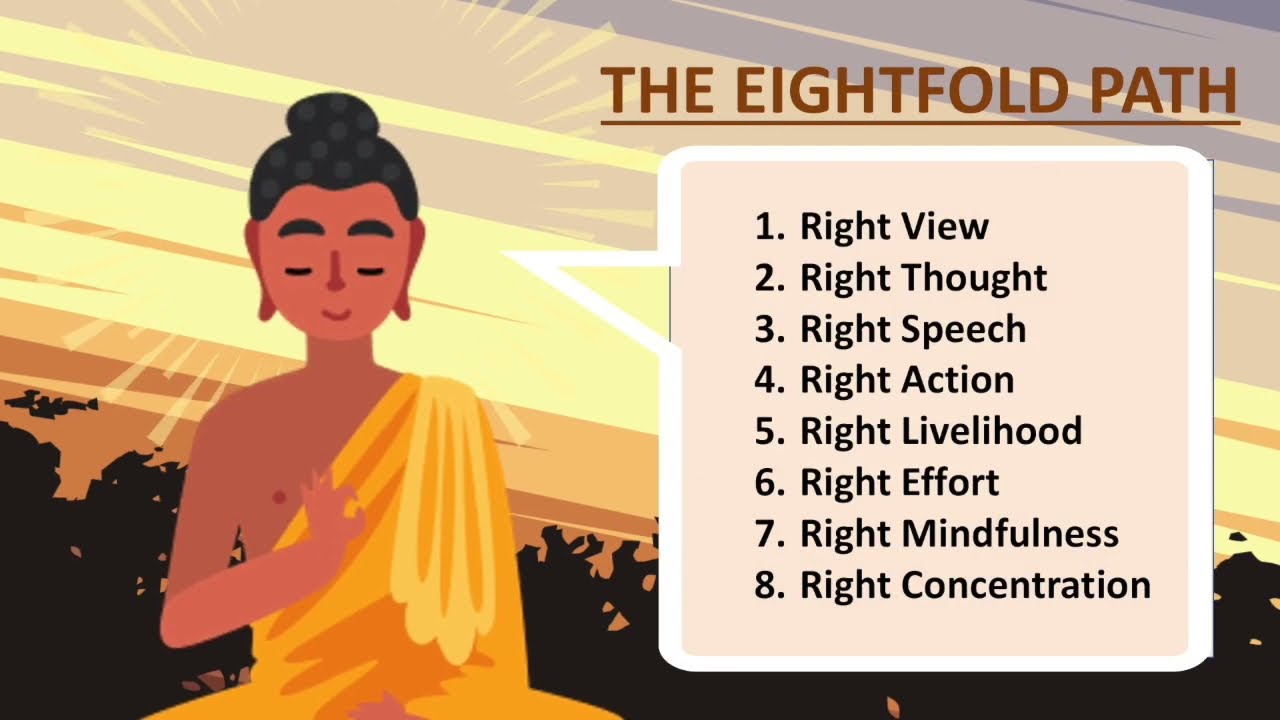In the quest for spiritual fulfillment, various philosophies and religions offer guidance and practices aimed at achieving inner peace and enlightenment. Among these, Buddhism stands out with its profound teachings on the path to liberation from suffering. Central to Buddhist doctrine is the Eightfold Path, a comprehensive framework for ethical and mental development. In this article, we will explore the intricacies of the Eightfold Path, its significance, and how it serves as a roadmap to spiritual awakening.
Table of Contents
ToggleUnderstanding the Foundation:
The Eightfold Path forms one of the essential teachings of Buddhism, elucidated by Siddhartha Gautama, the historical Buddha, over 2,500 years ago. It is often depicted as a wheel, symbolizing the interconnectedness of its components and the cyclical nature of existence. At its core, the Eightfold Path offers a systematic approach to alleviate suffering and attain nirvana, the state of ultimate liberation.
Right View:
The journey begins with cultivating the right understanding of the world and our place in it. Right View entails recognizing the impermanent and interconnected nature of existence, understanding the law of cause and effect (karma), and acknowledging the Four Noble Truths – the reality of suffering, its origin, cessation, and the path leading to its end.
Right Intention:
Following the establishment of Right View, practitioners are encouraged to develop Right Intention. This involves aligning one’s motivations with ethical principles and the pursuit of wholesome qualities such as compassion, loving-kindness, and renunciation. By fostering intentions free from greed, hatred, and delusion, individuals set the stage for moral conduct and mental purification.
Right Speech:
Speech holds immense power in shaping our reality and influencing others. Right Speech emphasizes the importance of communication guided by truthfulness, kindness, and mindfulness. Practitioners are urged to abstain from falsehood, divisive speech, harsh language, and idle gossip, recognizing the impact of words on relationships and personal well-being.
Right Action:
The ethical dimension of the Eightfold Path is further emphasized through Right Action. This aspect advocates for moral conduct in one’s actions, encompassing abstention from harming living beings, stealing, and engaging in sexual misconduct. By upholding principles of non-violence, honesty, and respect for others’ property and boundaries, individuals cultivate a harmonious way of living.
Right Livelihood:
The principle of Right Livelihood underscores the importance of earning a livelihood that is ethical and aligned with Buddhist values. This involves refraining from occupations that cause harm or contribute to the suffering of sentient beings, such as trading in weapons, intoxicants, or engaging in exploitative industries. Instead, practitioners are encouraged to pursue professions that promote well-being, integrity, and social harmony.
Right Effort:
Central to the path of spiritual growth is the cultivation of Right Effort. This entails exerting oneself in the abandonment of unwholesome qualities and the cultivation of wholesome ones. Practitioners are encouraged to overcome negative habits, such as greed, hatred, and ignorance, while nurturing positive qualities such as mindfulness, compassion, and wisdom. By persevering in this endeavor, individuals gradually transform their minds and actions, paving the way for inner peace and liberation.
Right Mindfulness:
At the heart of the Eightfold Path lies the practice of Right Mindfulness. This involves cultivating moment-to-moment awareness of one’s body, feelings, mind, and phenomena without judgment or attachment. Through mindfulness meditation and daily mindfulness practices, individuals develop clarity, insight, and equanimity, transcending the incessant fluctuations of the mind and attaining deeper states of presence and inner tranquility.
Right Concentration:
The culmination of the Eightfold Path is achieved through Right Concentration, the development of focused attention and mental absorption. Through the practice of meditation, practitioners cultivate single-pointed concentration, allowing them to penetrate the nature of reality and experience profound states of insight and liberation. By transcending the distractions of the senses and attaining deep states of absorption, individuals realize the ultimate goal of Buddhism – the cessation of suffering and the realization of nirvana.
Conclusion:
The Eightfold Path serves as a comprehensive roadmap to spiritual awakening, offering practical guidance for ethical living, mental development, and ultimate liberation from suffering. By diligently cultivating its eight components – Right View, Intention, Speech, Action, Livelihood, Effort, Mindfulness, and Concentration – individuals embark on a transformative journey towards enlightenment. In embracing the wisdom of the Eightfold Path, we illuminate the path to inner peace, wisdom, and liberation, embodying the timeless teachings of the Buddha.



